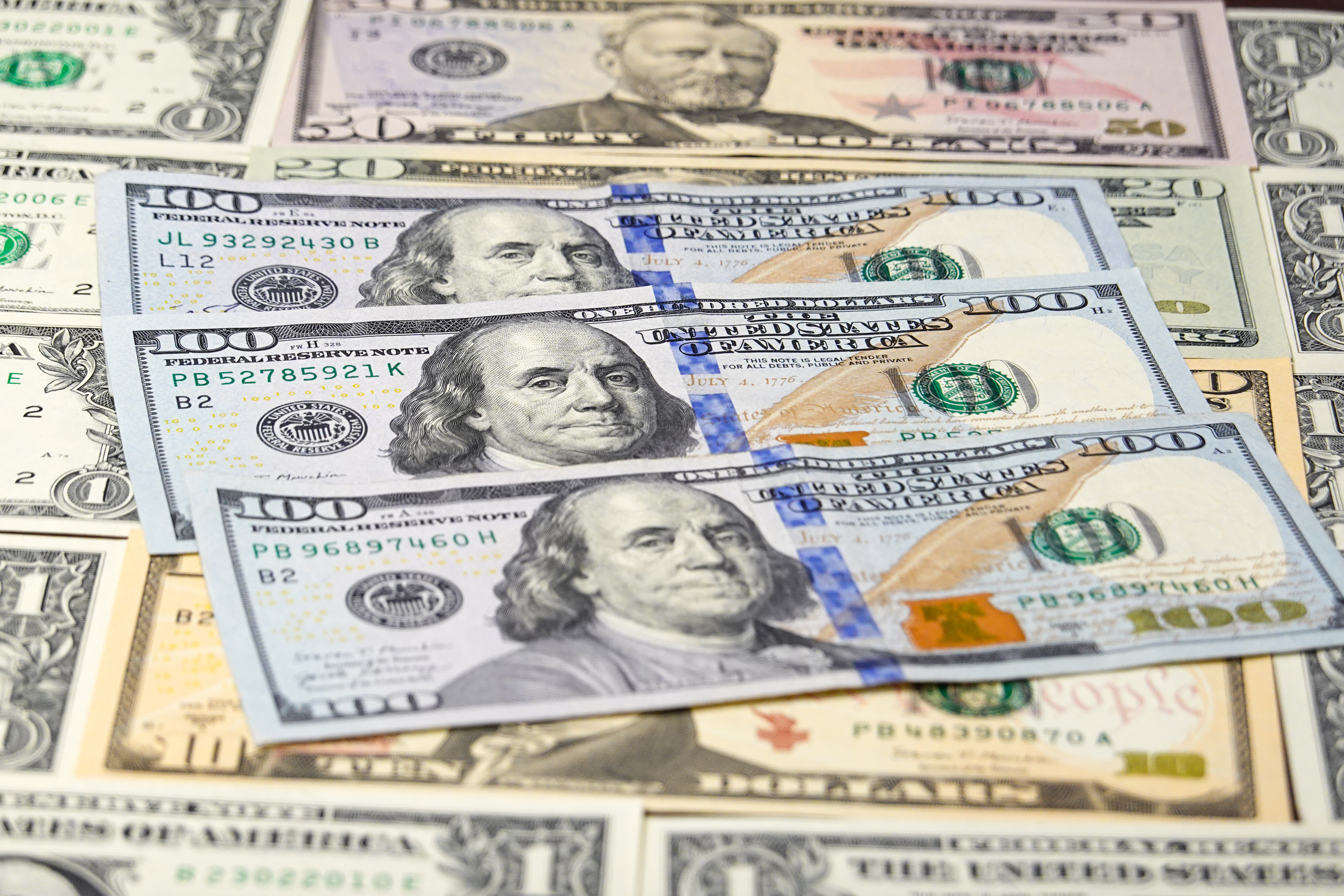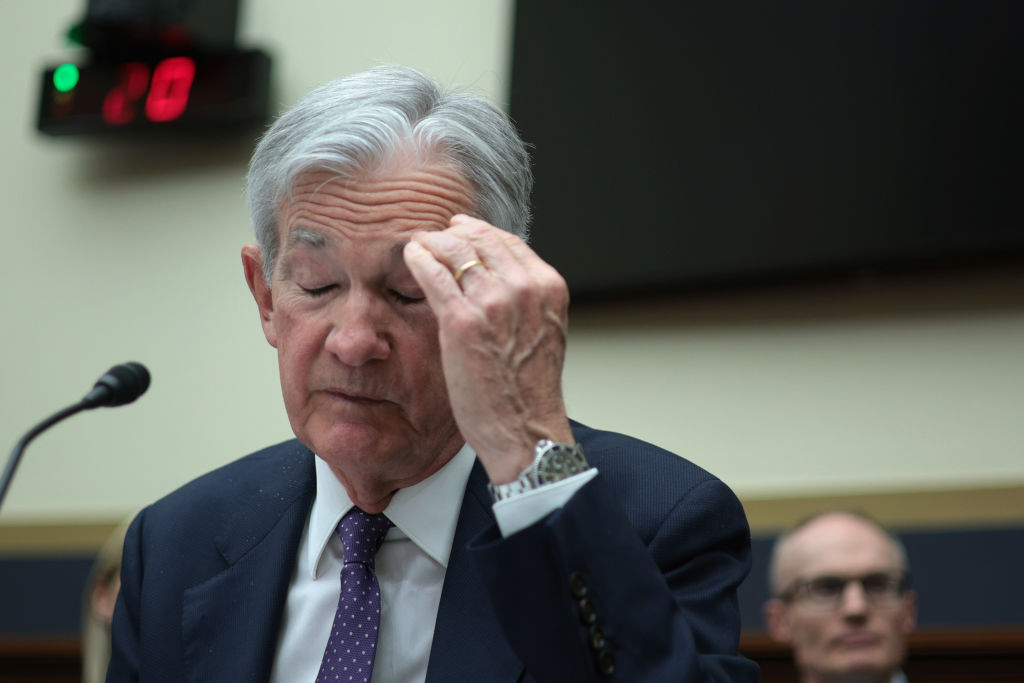Gold is poised for a new bull market
The price of golf has hit a six-year high, breaching the $1,400 an ounce level not seen since August 2013.

For an asset often dismissed as a "barbarous relic", gold is doing pretty well, says Randall Forsyth in Barron's. It has hit a six-year high, breaching the $1,400 an ounce level not seen since August 2013. This marks a breakout from a trading range it has been stuck in since 2013, when it had fallen back from the record peak above $1,900 it reached in 2011.
What's more, because the dollar has been strong in recent years, gold is looking even better when priced in other currencies. Trading around £1,127 early this week, gold is now within striking distance of its £1,178 per ounce sterling all-time high. As Charlie Morris of Halkin Services notes, it has now made all-time highs in Australian dollars reaching A$2,000 an ounce this week and is only about 3% off that mark in euros. This gold rally "has breadth".
A sea of troubles
Forget cryptocurrencies: investors are now turning to a much older and better-established expression of "distrust in government-issued paper currencies", as Forsyth puts it. People are always inclined to top up their gold holdings when the news is bad, and there are plenty of worries to justify holding a metal widely seen as the ultimate safe haven.
MoneyWeek
Subscribe to MoneyWeek today and get your first six magazine issues absolutely FREE

Sign up to Money Morning
Don't miss the latest investment and personal finances news, market analysis, plus money-saving tips with our free twice-daily newsletter
Don't miss the latest investment and personal finances news, market analysis, plus money-saving tips with our free twice-daily newsletter
Repeated confrontations between the White House and Iran have raised worries about war and the security of global oil supplies, while a resolution to Donald Trump's trade war with China remains a distant prospect. The world economy also appears to be turning down, with data in all major regions undershooting expectations recently. Furthermore, central banks' response to the slowdown should give the gold rally additional impetus.
Even easier money
Not too long ago everyone was braced for higher interest rates. Now it's a different story. The world's central banks spent last week "embracing easier monetary policy", says Michelle Jamrisko on Bloomberg. A dovish turn in its language meant that the US Federal Reserve got as "close to a rate cut as possible" without actually "executing one". Indeed, the debate now is over "how big the rate cut will be", adds Justin Lahart in The Wall Street Journal. Some economists are forecasting a quarter of a percentage point reduction next month, others are betting on half. Yet with the benchmark US short-term rate at 2.25%-2.5%, "rates are low to begin with". Lower US interest rates make dollar-denominated investments less attractive, which drives down demand for the greenback relative to other assets. As gold is priced in dollars, a weaker US currency means a higher gold price. The new wave of central bank dovishness is broad based. In Europe, Mario Draghi also hinted at more rate cuts and bond buying. Brazil held interest rates at a record low, while Australian central bankers said that further monetary easing down under is "more likely than not".
Lower interest rates worldwide are another tailwind for gold. Unlike equities and bonds, the yellow metal pays its holders no income. That is usually a significant drawback, but with bond yields plunging to new depths they are negative in Germany and Japan gold looks increasingly attractive on a relative basis.
The ultimate inflation hedge
Easier monetary policy also increases the risk of higher inflation, which boosts gold as it has maintained its real value for thousands of years. Markets appear to be underestimating the risks of an inflationary scare. Lowering interest rates "when they are too low already doesn't strike me as a brilliant idea", writes Charles Gave of Gavekal Research. Over the last decade, "the world's central bankers have made an astonishing discovery". They think that they can "print as much money as they want, and even non-stop printing will have no inflationary impact". Yet the laws of economic gravity have not been repealed. Investors nervous that history will eventually "rhyme" should "replace bonds with gold in their portfolios" and be more wary of stocks.
So where might inflation come from? Tight labour markets. US and UK wage growth have both reached post-crisis highs in recent months. Unemployment in the UK continues to bob around 44-year lows, which should give workers more bargaining power to negotiate wage rises. Last year may have seen the US hit "peak graduation", says Brian Pellegrini of Intertemporal Economics, quoted in the Halkin Letter. That implies a squeeze up ahead in the supply of high-skilled workers. In Europe the labour market is also tightening. Half of Poland's companies are reporting recruitment difficulties and remuneration growth in the Romanian manufacturing sector is at a ten-year high.
Plenty of room in the market
Another reason to be bullish is the scope for prices to jump once investors notice the upswing and try to cash in on it. Gold exchange-traded fund (ETF) holdings were equivalent to 1% of the US equity market at the metal's 2011 peak, notes Morris. Yet that figure is now down to 0.3%, meaning the market is comparable to the market capitalisation of Starbucks. "Gold doesn't seem like a crowded trade to me."
The relatively small size of the gold market means that prices can move quickly. SPDR Gold Shares, the largest bullion-backed ETF, saw $1.6bn of inflows last Friday, "the most since its inception in 2004", notes Bloomberg. Central banks in China, Russia, India and Turkey have increased their gold holdings by two-thirds since 2015 as they try to diversify away from dollars, adds Lex in the Financial Times. These new buyers will all help support the gold price. The stars, then, are aligned for a lasting upswing in gold. We continue to advocate holding 5%-10% of your portfolio in the yellow metal. One way to profit from a bull market is the ETFS Physical Gold ETF (LSE: PHAU).
Get the latest financial news, insights and expert analysis from our award-winning MoneyWeek team, to help you understand what really matters when it comes to your finances.
Alex is an investment writer who has been contributing to MoneyWeek since 2015. He has been the magazine’s markets editor since 2019.
Alex has a passion for demystifying the often arcane world of finance for a general readership. While financial media tends to focus compulsively on the latest trend, the best opportunities can lie forgotten elsewhere.
He is especially interested in European equities – where his fluent French helps him to cover the continent’s largest bourse – and emerging markets, where his experience living in Beijing, and conversational Chinese, prove useful.
Hailing from Leeds, he studied Philosophy, Politics and Economics at the University of Oxford. He also holds a Master of Public Health from the University of Manchester.
-
 The most influential people of 2025
The most influential people of 2025Here are the most influential people of 2025, from New York's mayor-elect Zohran Mamdani to Japan’s Iron Lady Sanae Takaichi
-
 Millions of parents are missing out on up to £720 a year in extra pension cash – are you affected?
Millions of parents are missing out on up to £720 a year in extra pension cash – are you affected?A mum who narrowly missed out on the pension boost said she “never knew the government rule existed” and wants other parents to use it
-
 The challenge with currency hedging
The challenge with currency hedgingA weaker dollar will make currency hedges more appealing, but volatile rates may complicate the results
-
 Can Donald Trump fire Jay Powell – and what do his threats mean for investors?
Can Donald Trump fire Jay Powell – and what do his threats mean for investors?Donald Trump has been vocal in his criticism of Jerome "Jay" Powell, chairman of the Federal Reserve. What do his threats to fire him mean for markets and investors?
-
 Freetrade’s new easy-access funds aim to beat top savings rates
Freetrade’s new easy-access funds aim to beat top savings ratesFreetrade has launched an easy-access exchange traded fund (ETF) range - here’s how the ETFs work and how they compare to the savings market
-
 Go for value stocks to insure your portfolio against shocks, says James Montier
Go for value stocks to insure your portfolio against shocks, says James MontierInterview James Montier, at investment management group GMO, discusses value stocks and slow-burn Minsky moments with MoneyWeek.
-
 Where do we go from here?
Where do we go from here?Features A new series of interviews from MoneyWeek
-
 As China reopens, why pick an income strategy?
As China reopens, why pick an income strategy?Advertisement Feature Yoojeong Oh, Investment Manager, abrdn Asian Income Fund Limited
-
 Income in the USA
Income in the USAAdvertisement Feature Fran Radano, manager on The North American Income Trust
-
 The challenge of turbulent markets
The challenge of turbulent marketsAdvertisement Feature Today, ISA investors face one of the most challenging economic environments seen in recent years. However, good companies can still thrive, even in the toughest economic conditions. That’s why BlackRock’s fund managers focus on these businesses when they’re looking for investment opportunities.